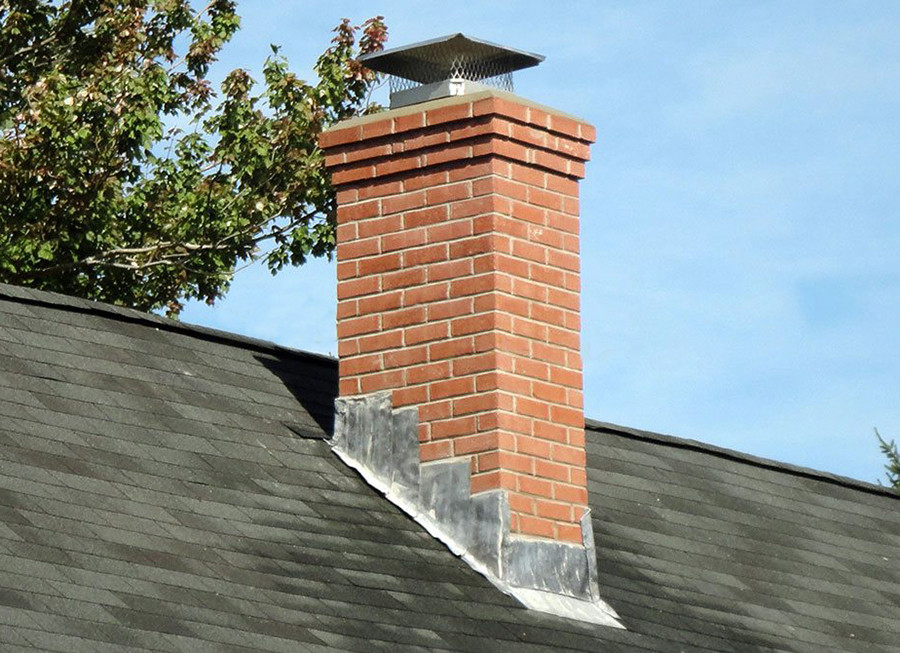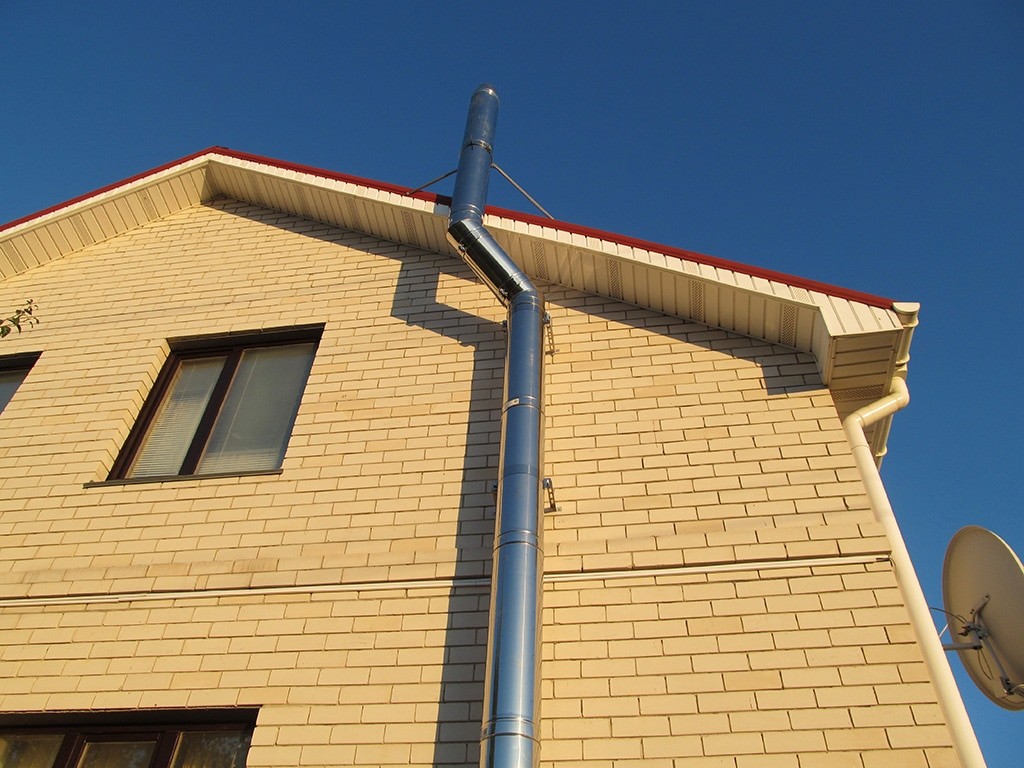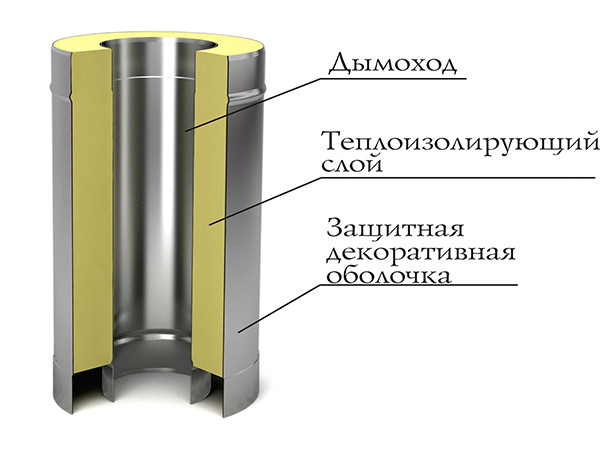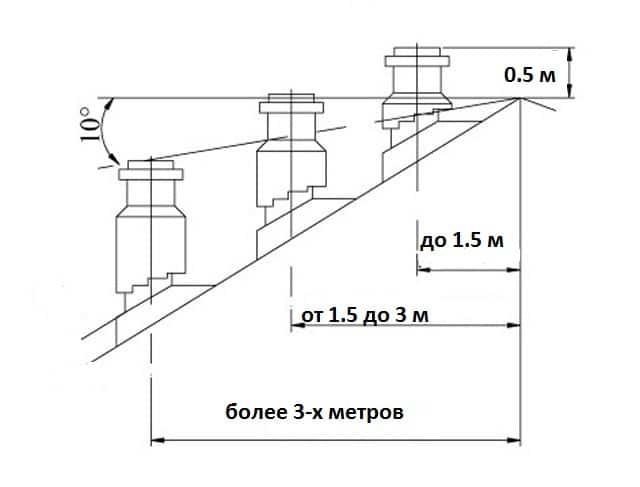Which chimney is better for a house and a solid fuel boiler?
Types of chimneys
A chimney is an integral part of a heating system organized on the basis of a solid fuel boiler. The stability and efficiency of the boiler depends on the chimney, or rather on its design and quality of execution.
There are several types of chimneys that differ in materials and design. Each type of chimney has its pros and cons. Let's take a closer look at the types of chimneys and the pros and cons of each type.
Chimneys differ in the material from which they are made.
The following types of chimneys are distinguished by material:
- brick or masonry chimney
- metal chimney
Chimneys made of brick or masonry

This type of chimney is very common due to the traditional use of bricks in the construction of residential chimneys. As a rule, such chimneys are common in already constructed buildings and are their architectural part.
Since brick and stone have such physical properties as a high level of heat capacity and thermal conductivity, the operation of chimneys made of this material has the following nuances:
- when starting the boiler with a cold brick chimney, a very weak draft effect may be observed, which will be manifested in the smoke of the boiler room. The effect of weak draft will be present until the chimney is fully warmed up
- If a brick chimney is in contact with the external environment with all or one side, the effect of intense condensation inside the chimney can be observed, which in turn leads to its rapid contamination with combustion products.
- over time, due to constant temperature changes, the brickwork of the chimney can lose its integrity, which manifests itself in the form of cracks. This is a very dangerous situation from the point of view of fire safety. Under certain conditions, the soot in the chimney can catch fire and the fire can enter the room through the cracks. To avoid such a situation, it is recommended to liner a brick chimney with a stainless steel pipe.
In general, it is worth noting that based on the complexity of installation, as well as many nuances associated with operation, the feasibility of a brick chimney is, to put it mildly, questionable.
Metal chimneys

Metal chimneys - This is the most common type of chimney. As a rule, they are made of round or rarely rectangular pipes. Both ordinary and stainless steel can be used as a material. Chimneys made of ordinary steel are significantly inferior to stainless steel chimneys in terms of durability, especially if the construction lacks thermal insulation. However, on the other hand, a stainless steel chimney is much more expensive.
Important! It is not recommended to make a chimney of galvanized steel. Such chimneys are extremely short-lived, literally for one or two seasons.
In any case, it is recommended to insulate any metal chimney along its entire length. Only a heat-insulated chimney allows you to get rid of such unpleasant phenomena as:
- traction overturning;
- smoke in the boiler room;
- formation of large amounts of condensation in the chimney and, as a result, rapid contamination of the chimney with soot and tar.
Which chimney is better for a solid fuel boiler?
Today, the best type of chimney is the so-calledchimney sandwich. Structurally, such a chimney consists of two pipes - an inner pipe made of stainless steel and an outer pipe made of galvanized or stainless steel. Between the inner and outer pipe is a heat-insulating layer of basalt fiber or other heat-insulating material. Due to the presence of a thermal insulation layer, such chimneys warm up quickly and retain the necessary draft and, of course, minimize the formation of condensation inside.

The advantages of a sandwich chimney are:
- durability
- ease of installation
- easy to clean
- minimal condensation formation
- aesthetic appearance
Among the disadvantages of the sandwich chimney, perhaps only one can be noted - the high cost. However, this disadvantage is fully offset by the many advantages listed above.
Important! When choosing a chimney, the technical requirements of the solid fuel boiler manufacturer regarding the cross-sectional area and height of the chimney should be taken into account. This information is contained in the operating instructions for the solid fuel boiler. At the same time, such a parameter as the minimum chimney height at each specific facility may differ from the one recommended by the manufacturer of the solid fuel boiler. The difference can be both upward and downward, and it directly depends on the height of the building itself, as well as on the terrain of the surrounding area and the presence of tall objects on it.
Chimney height for a solid fuel boiler
When installing a chimney, the following rule must be observed - the chimney must always be at least half a meter higher than the highest point of the building! However, if the chimney is sufficiently removed from the highest point of the building, the chimney can be made lower. The relationship between the chimney height and the distance to the highest point of the building can be illustrated in the following figure.

According to the above diagram, the upper end of the chimney should fall within a 10-degree sector relative to the roof ridge as it moves away from the building's ridge.
Installation of mushrooms and weather vane on the chimney
Chimney caps are installed to protect the chimney from precipitation. The installation of a chimney fungus should be approached responsibly. The fact is that if the distance between the edge of the pipe and the inner plane of the fungus is too small, the following unpleasant phenomena may occur:
- weakening of the draft and, as a result, smoke in the boiler room;
- smoke swirling around the chimney, which leads to a deterioration in the appearance of the chimney due to contamination;
- smoke that spreads over the ground under certain meteorological conditions.
To avoid the above troubles, it should be remembered that the distance from the edge of the pipe to the inner surface of the fungus should be no less than the diameter of the chimney.
Recently, the installation of such an element as a weather vane on the edge of the chimney has become popular. This element of the chimney system allows you to direct smoke strictly in the direction of the wind. However, sometimes this element can become jammed due to icing, as a result of which, when the wind direction changes to the opposite, the traction disappears. Therefore, because of this problem, installing a weather vane on the chimney is not recommended.
Chimney cleaning and maintenance
Important! Chimney cleaning is an inevitable and extremely necessary measure, as a dirty chimney is the cause of the loss of draft and all the negative aspects associated with it.
Even at the design stage of the chimney, you should provide for the organization of such elements as:
- a soot collector with a door,
- inspection hatches in the horizontal parts of the chimney.
All these elements are necessary to control the condition of the chimney's inner surface, as well as to clean it. The frequency of cleaning depends on the rate of contamination of the chimney with combustion products, and in turn, the rate of contamination depends on many factors such as: the type and quality of solid fuel, the design of the chimney (presence of a heat-insulating layer), the boiler furnace mode (setting the optimal combustion process). It is recommended to check the chimney for contamination through inspection hatches at least once a month.
Cleaning can be carried out as the chimney becomes dirty, but at least once during the heating season.
Important! A properly designed, installed and timely maintained chimney is the key to the stability and efficiency of a solid fuel boiler.